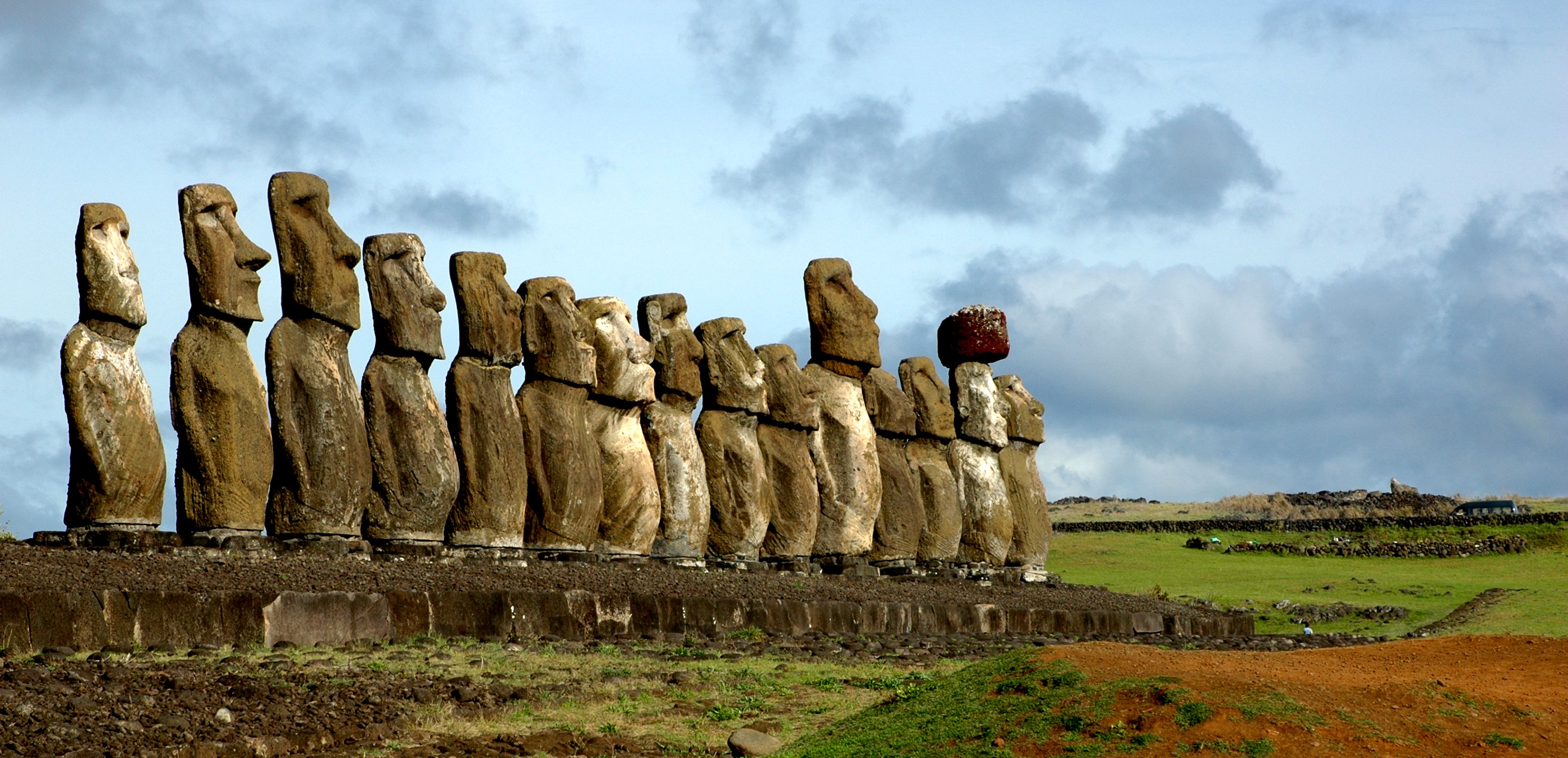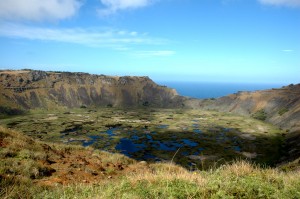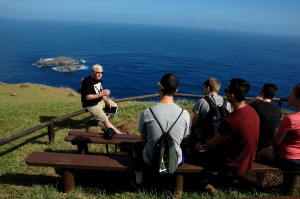When my plane landed on Rapa Nui, I had already taken two classes about the island, read countless books and articles, written about 10 papers, and watched several videos and documentaries. But for all the plethora of research and information that is available about Rapa Nui- or more commonly known “Easter Island”- nothing could have prepared me for this experience.
After leaving Oregon, we had been traveling for over 24 hours before we finally reached the tiny 632 mile island. Since taking off from the bustling airport in Santiago, Chile five hours earlier, we hadn’t seen a single land mass anywhere in the 2,290 miles of ocean we had crossed. It began to feel as though we had left the entire world behind, as if we would reach the end of the Earth. Finally, the island came into view, and we could see our destination. From the air, you can see the entire island easily, with it’s air strip stretching from coast to coast across the width of the island, the “airport”- which is just one small building- off to one end.
The utter isolation is exhilarating. Thousands of miles of ocean stretch out in all directions, with no land in sight, and the only connection to the outside world is the one daily flight to and from the island, carrying with it the daily load of groceries. In extreme weather, the island is sometimes completely cut off from the mainland. The island is populated by just over 5,500 people, most of whom live in the village near the airport. Although tourism dominates their economy, their vibrant culture is apparent. The “island lifestyle” is common among most island societies- the laid back attitude, living on “island time”- but on Rapa Nui, this lifestyle is taken to the extreme. Shops open and close when the owners feel like it, and you will often find all businesses closed on Sunday, or during the daily “siesta” from 12-2pm.
When you’ve lived your entire life on one small island with the same few people, you end up knowing every inch of the land and every person in town. While on the island, our group had two local guides that we worked closely with every day. Wherever we went, they knew exactly where we were and exactly who everyone was, greeting every passerby by name. This type of community and culture was entirely foreign to me, and in some ways it was great. The police force and crime rate is exceedingly minimal on the island- since everyone would be able to figure out who committed the crime anyway, people just don’t bother to try anything. In other ways, it wasn’t so great. Everyone knows everyone’s business, and privacy is hard to come by.
Aside from the fascinating culture and the uniquely isolated location, the truly enthralling aspect of Rapa Nui is the richly abundant and accessible history. Most people know of the famous “Easter Island heads,” but most don’t realize how many there are. There are thousands of these statues throughout the island, as well as an extensive collection of other archaeological artifacts. You can’t take a step without coming across an obsidian flake, a stone tool, a carving- all created thousands of years ago. Walking past the monumental statues, looming two or three stories above you, and thinking of the people who have walked there thousands of years before you, who spent years creating these massive stone faces, is awe-inspiring to say the least.
Living on Rapa Nui was a once in a lifetime experience, and probably the closest I’ll ever come to living on another planet. With my program, we were able to spend many days out exploring, hiking, experiencing the local culture, and collecting research data. We even had lectures and discussions for the class while out at archaeological sites around the island. If you ever have the chance to make this beautiful island your classroom, do not pass it up. I know firsthand- when it comes to Rapa Nui, you have to see it to believe it.
-Kayla Bucolo, Summer 2016



